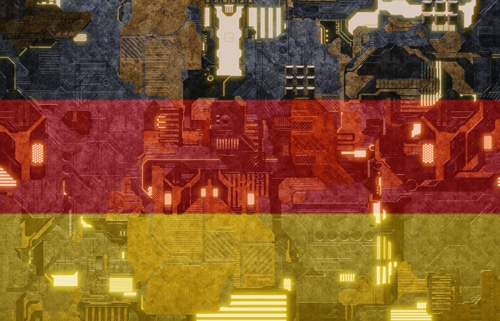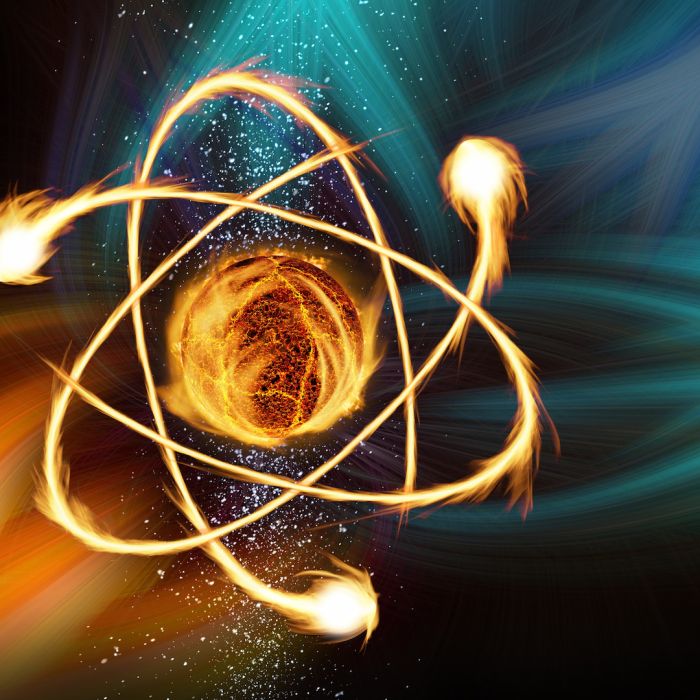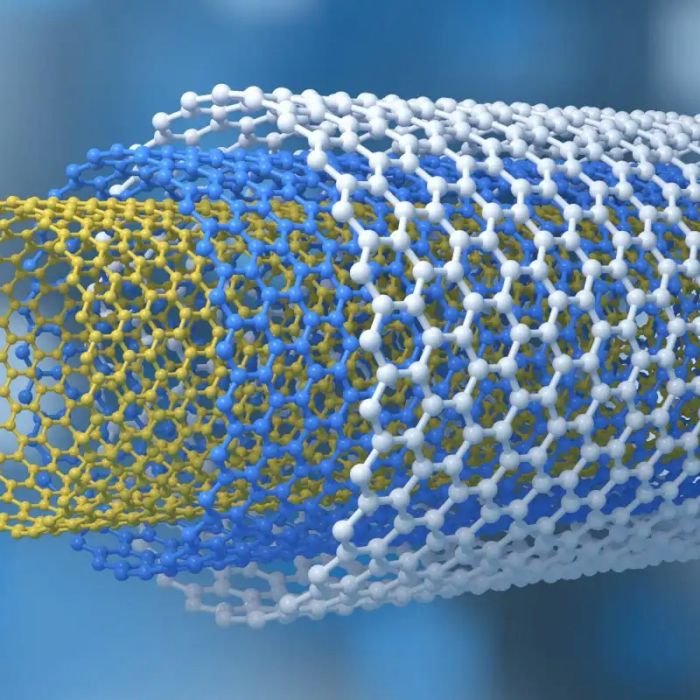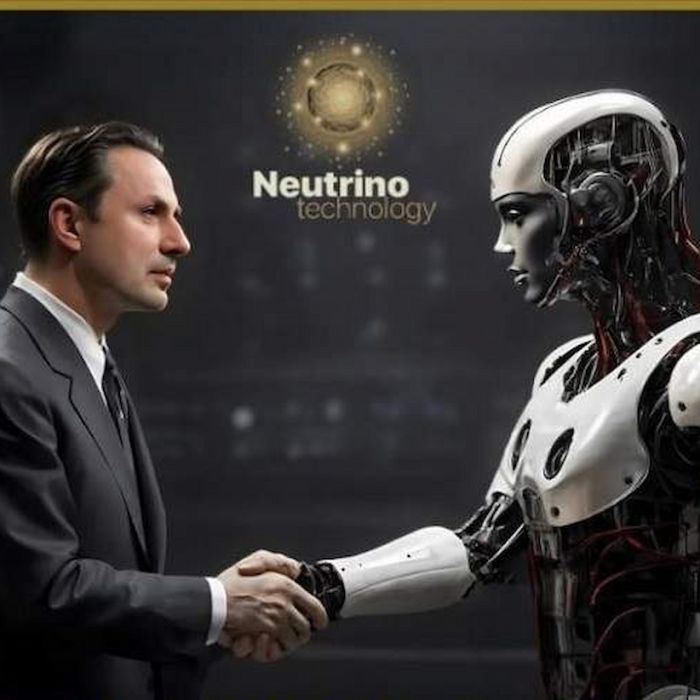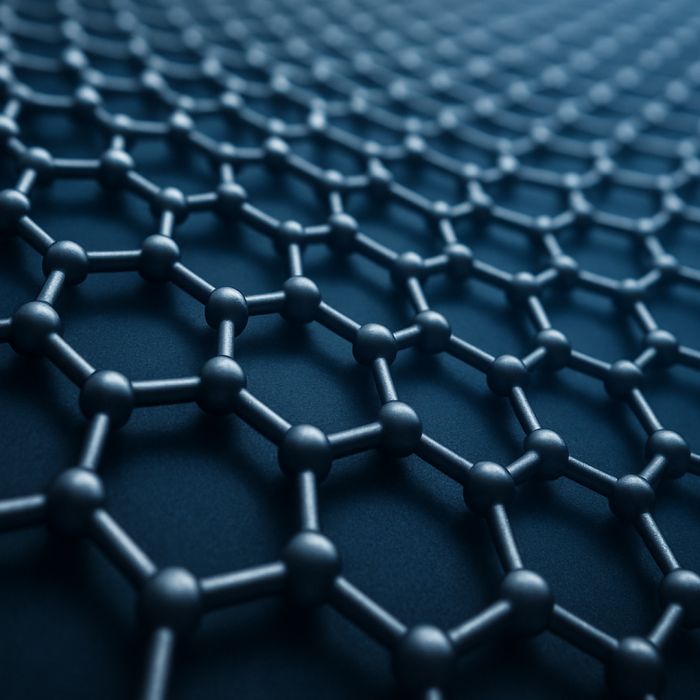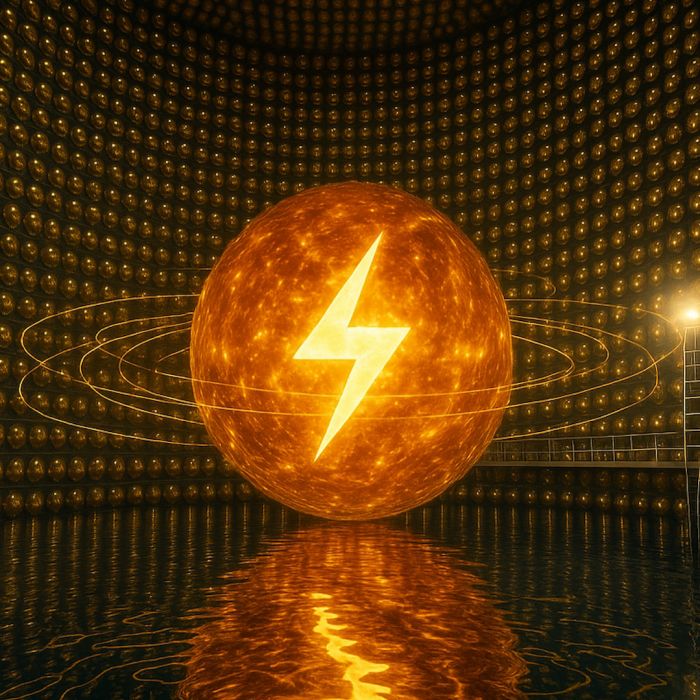
Neutrinovoltaic is a technology used to convert the thermal (Brownian) motion of graphene atoms and the energy of the surrounding fields of invisible radiation, including neutrinos, into electric current using a multilayer graphene-based nanomaterial. The first patent applications were filed in 2013, and the invention is now protected by international patent WO2016142056A1.
Structurally, the nanomaterial consists of alternating layers of graphene and doped silicon, with each graphene layer sandwiched between 2 silicon layers (Fig. 1). The first layer of graphene is deposited on a metallic layer, usually aluminium. The number of graphene-silicon layers is 12 to 20, optimally 12 layers. The nanomaterial is applied to one side of the metallic layer, making the side with the nanomaterial the positive pole and the uncoated side the negative pole. Under normal conditions 20 °C, such a current generation plate with a size of 200×300 mm has a voltage of approx. 1.5 V and a current of approx. 2 A.

A Mechanism by Which the Energy of the Surrounding Radiation Fields Can Be Converted into Electric Current
Graphene is the only material currently known that belongs to the 2D materials but can only exist stably in a three-dimensional coordinate system, as a 3D material. Viewing the graphene layer through a high-resolution microscope reveals the presence of wave-like oscillations on the sea surface (Fig. 2). when adjacent areas switch between concave and convex curvature. The stronger the influence of energy and thermal fields, the stronger the oscillations of the graphene atoms and thus the frequency and amplitude of the oscillations of “graphene waves”. Theoretical studies provide an explanation that the source of this process is the electron-phonon bond, as it suppresses the rigidity of long-wave bending and amplifies extraplanar fluctuations.

It is the presence of “graphene waves” that allow an electric current to be generated, and the amplitude and frequency of the oscillations of “graphene waves” depend on the quality of graphene deposition. They are at their maximum with one layer of graphene, but if the technology of graphene deposition is infringed and several of its layers are applied on top of each other, then the amplitude and frequency of the oscillations of the “graphene wave” decrease. The explanation of these experimental results was independently confirmed by ETH professor Vanessa Wood (Swiss Federal Institute of Technology, Zurich) and her colleagues, who showed that when materials smaller than 10-20 nanometres are produced, i.e. 5000 times thinner than a human hair, the vibrations of the outer atomic layers on the surface of nanoparticles are large and play an important role in the behaviour of this material. These atomic vibrations or “phonons” are responsible for how electrical charge and heat are transferred in materials (Fig. 3).

Therefore, compliance with graphene deposition technology is a key technological task, especially for sheets larger than 100 x 100 mm. Graphene has an extremely high electric current density (one million times higher than that of copper) and record mobility of charge carriers. In graphene, each atom is bonded to 3 other carbon atoms in a two-dimensional plane, leaving one electron freely available in the third dimension for electron conductivity. In an interview with the journal Research Frontiers, Professor Thibado (University of Arkansas) explained, “This is the key to harnessing the motion of 2D materials as a source of inexhaustible energy. Tandem vibrations cause waves in the graphene layer, making it possible to extract energy from the surrounding space using advanced nanotechnology.”
Graphene layers are remarkably strong and elastic. Graphene has a very high thermal conductivity, which in combination with its high electrical conductivity allows the passage of an electric current millions of times higher than the maximum possible current in copper layers. At elevated temperatures, according to the Fermi-Dirac distribution, some of the electrons pass into the conduction band and “holes” remain in the valence band. This determines the sufficiently high electrical conductivity of graphene at room temperature. Conduction electrons and “holes” in graphene have no effective mass, i.e. they cannot be stationary, but are constantly moving at the “Fermi velocity”, which in graphene is about 106 m/s, i.e. already relativistic. This leads to a very high mobility of the charge carriers in graphene, which is at least two orders of magnitude higher than their mobility in silicon, and to the “ballistic” nature of their movement along the layer. The free path of conduction electrons and holes in graphene at room temperature is more than 1 μm.
The harmonic oscillations of “graphene waves” that transform into resonance are in fact the work necessary to convert the thermal (Brownian) motion of graphene atoms and the energy of the particles of the surrounding radiation fields of the invisible spectrum, including the kinetic energy of neutral neutrino particles, into electric current. As in the currently manufactured electric generators installed in power plants, the developed Bedini electricity generation schemes and other schemes of magnetic motors for fuel-free electricity generation, an electromotive force (EMF) occurs in each graphene layer due to the interaction of magnetic and electric fields. The main difference, however, is that in neutrinovoltaic technology the pulsating mechanism of interaction does not occur through the rotation of the rotor with a magnetic coil, but through the process of micro-vibration of graphene in the nanomaterial, which is another physical principle of electromotive force (EMF) occurrence. The EMF that occurs in each graphene layer causes electrons to flow in one direction, i.e. an electric current is created. The movement of electrons in one direction is achieved by depositing layers of each layer with alloying elements that create a p-n junction that allows an electric current to pass in only one direction, i.e. the effect of a thin film diode occurs. The multilayer nature of the nanomaterial offers a solution to the problem of obtaining the maximum possible electrical power from a unit surface, as one layer of graphene cannot provide enough energy for industrial applications.
Influence Of Neutrinos on the Oscillation Process of the “Graphene Wave”.
In 2019, it was published that scientists at the Karlsruhe Institute of Technology (KIT) were able to determine the mass of neutrinos with unprecedented accuracy. According to KIT, neutrinos are at least 500,000 times lighter than an electron; the mass of the particles is about 1.1 electron volts. The mechanism of the interaction of neutrinos with matter was elucidated and described in the publications of the COHERENT collaboration at Oak Ridge National Laboratory (USA). It has been proven that low-energy neutrinos are involved in a weak interaction with argon nuclei. This process is called coherent elastic neutrino nuclear scattering (CEvNS). Neutrinos “strike” a bowling ball like a tennis ball and “strike” the large and heavy nucleus of an atom and transfer a tiny amount of energy to it. This causes the nucleus to bounce almost imperceptibly (Fig. 4).

A similar interaction of low-energy neutrinos takes place in the interaction with graphene. Argon has a serial number of 18 and an atomic weight of 39.948 in the periodic table of chemical elements, while graphene (carbon) has a serial number of 6 and an atomic weight of 12.011. This suggests that the effect of neutrino impacts on the nuclei of graphene atoms will be more pronounced than on argon nuclei. The greater the kinetic energy of neutrinos, the greater the effect of their interaction with graphene nuclei. This means that the oscillations of its atoms are stronger. The size of the nucleus of a graphene atom is very small compared to the size of the graphene atom itself, so only a small fraction of neutrinos with mass can interact with the nucleus of a graphene atom and cause it to oscillate. As you may know, the neutrino flux through 1 cm2 of the Earth’s surface in 1 second is 60 billion, so even a fraction of a percent of such neutrino flux contributes to the oscillation process of “graphene waves”, although it is currently not possible to estimate the contribution of the neutrino effect to the oscillation of graphene atoms compared to other energy fields and thermal (Brownian) motion. According to international scientists from renowned faculties, this process is now clearly scientifically confirmed, hence the technology and its applications are called neutrinovoltaics.
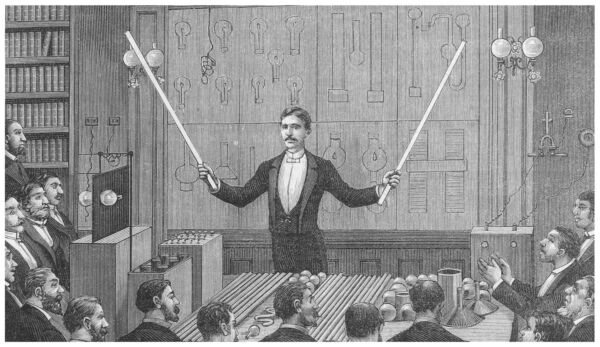





Ground was broken in the field of neutrino power in 2015 when two independent scientists, Takaaki Kajita in Japan and Canadian Arthur McDonald, proved that neutrinos – tiny rays of cosmic particles that permeate almost everything in the universe – does in fact have mass. And, as Einstein’s Relativity Theory goes, e=mc2, or everything with mass also contains energy. For their discovery, the two scientists were each bestowed the prestigious Nobel Prize in Physics.
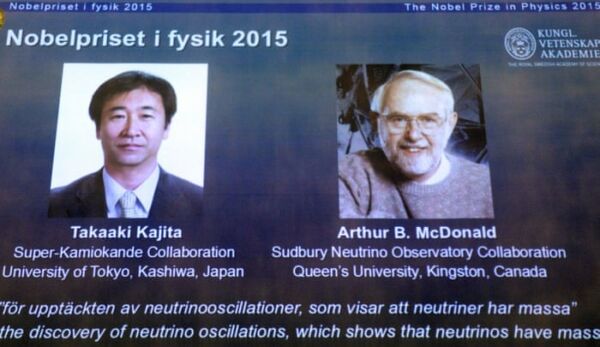

Ground was broken in the field of neutrino power in 2015 when two independent scientists, Takaaki Kajita in Japan and Canadian Arthur McDonald, proved that neutrinos – tiny rays of cosmic particles that permeate almost everything in the universe – does in fact have mass. And, as Einstein’s Relativity Theory goes, e=mc2, or everything with mass also contains energy. For their discovery, the two scientists were each bestowed the prestigious Nobel Prize in Physics.


The Neutrino Energy Group dedicates its entire resources toward research and development of neutrinovoltaic technologies capable of transforming ethereal mass into usable energy. In the meantime, the United States Department of Energy has recognized the validity of the neutrino energy postulation, and since then, hundreds of millions of dollars have been poured into neutrino research across the globe. The integration of artificial intelligence (AI) in this field is further driving advancements, enabling scientists to optimize the energy conversion process, streamline experimental design, and accelerate the pace of discovery in harnessing the power of neutrinos.


The Neutrino Energy Group dedicates its entire resources toward research and development of neutrinovoltaic technologies capable of transforming ethereal mass into usable energy. In the meantime, the United States Department of Energy has recognized the validity of the neutrino energy postulation, and since then, hundreds of millions of dollars have been poured into neutrino research across the globe. The integration of artificial intelligence (AI) in this field is further driving advancements, enabling scientists to optimize the energy conversion process, streamline experimental design, and accelerate the pace of discovery in harnessing the power of neutrinos.
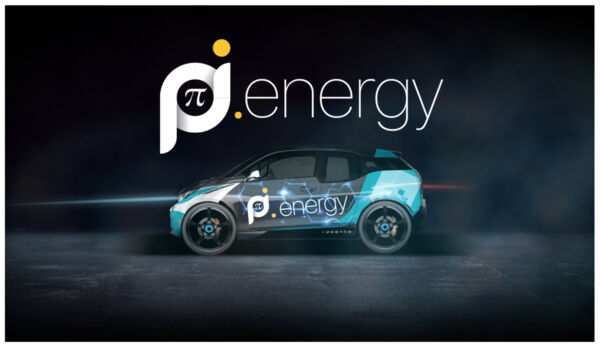

The Neutrino Energy Group now brings out the first prototypes. With the help of artificial intelligence, neutrinovoltaic technology will truly alter the way we think about renewable energy sources and help us live in a better and more environmentally friendly world. The renewable future will truly become a reality, and it’s all due to cosmic energy’s limitless potential.
The Neutrino Energy Group now brings out the first prototypes. With the help of artificial intelligence, neutrinovoltaic technology will truly alter the way we think about renewable energy sources and help us live in a better and more environmentally friendly world. The renewable future will truly become a reality, and it’s all due to cosmic energy’s limitless potential.
While neutrinovoltaic technology is one of the newest forms of energy providing Neutrino Energy Group is pleased to announce that this paradigm-shifting technology is already making waves around the world. Derived from combining the words “neutrino” and “photovoltaic,” neutrinovoltaic technology convert electrical energy from non-visinble radiation.
While mainstream science has just caught up to the idea that extremely thin layers of carbon are capable of responding to and carrying electrical energy, Schubart and the team at the Neutrino Energy Group have been hard at work developing usable neutrinovoltaic technology since 2015. Inspired by the gripping 2015 discovery that neutrinos do, in fact, have mass, CEO Holger Thorsten Schubart has dedicated the full resources of the Neutrino Energy Group toward developing new technologies capable of transforming this ethereal mass and power into usable energy.
All Things Neutrino
Research into neutrino particles and their potential interactions with matter has increased since Takaaki Kajita and Arthur B. McDonald, the leaders of two experimental teams studying neutrino properties (Super-Kamiokande and SNO), were awarded the 2015 Nobel Prize in Physics for demonstrating that neutrinos do, in fact, have mass. The work of these scientists proved conclusively that the three known species of neutrinos today can oscillate, spontaneously transforming on the fly into each other.
The neutrinos of a particular species can be born in reactions with elementary particles, and the neutrinos of a particular mass can propagate through space. It is the proof of the existence of mass, and hence energy, that is the key argument for the theoretical possibility of converting neutrinos’ kinetic energy into electric current. This made it easier to understand the findings of experimental work carried out by the science and technology companies behind the Neutrino Energy Group to create Meta-materials that could transform the energy of surrounding radiation fields into electric current.
The technology, called Neutrinovoltaic, which bears a close resemblance to Photovoltaic but is devoid of its critical shortcomings, has been developed by an international team of scientists led by German scientist and mathematician Holger Thorsten Schubart. For years, it was believed that neutrinos do not interact with matter, so even scientists specializing in this research area found it difficult to give an unequivocal answer as to the applicability of the new findings. Lack of unanimity in scientific community about the role of neutrinos and absence of evidence of interaction of neutrinos with substances made it difficult at the early beginnings for the developers of Neutrinovoltaic technology to defend with arguments the proposed method of getting electricity from ambient fields of invisible spectrum radiation.
How It All Started
Talks about neutrinovoltaic technology started at various conferences in 2014, the scientific world and business structures unfortunately did not accept at this time Neutrino Energy Group’s concept of creating a fundamentally new electric current technology that would put intense neutrino flux at the service of humans in practice. Every one of their presentations was met with accusations and arguments that neutrino particles lack mass and do not interact with matter, as well as threats and rebukes – “don’t be pseudo-science.” and had to listen to such comments, even from very reputable scientists. The experimental findings submitted by various scientists of the Neutrino Energy Groups Scientific Board about the performance of the technology were not approved.
Slowly, however, the scientific community started accepting the argument that the radiation fields around us could be a source of limitless electricity. But any experimental results require scientific justification. Without the creation of a theoretical model, providing experimental data alone is quite insufficient for widespread acceptance. And it is the experimental results and the theoretical justification that create a holistic and clear picture.
How is the energy of ambient radiation fields converted into electric current?
The transformation mechanism involves the creation of vibrations in the atoms of graphene, which has a hexagonal crystal lattice. In graphene, a wave, like waves on the surface of the sea, arises from a combination of small spontaneous motions and leads to larger spontaneous motions. The displacement of one atom, added to the thermal displacement of other atoms, produces surface waves with horizontal polarization, known in acoustics as “Lyav waves.” Due to the peculiarities of the crystal lattice of graphene, its atoms oscillate as if in tandem, which distinguishes such movements from the spontaneous movements of molecules in liquids.
Therefore, also the thermal Brownian motion is crucial in the energy conversion mechanism, as the vibrations of the outer atomic layers on the surface of nanoparticles with a thickness less than 10–20 nanometers and play an important role in how this material “behaves.” As a result, if you cannot ensure uniform application of graphene with a thickness of 1 atom the efficiency of conversion of energy of radiation fields into electric current drops sharply, so the Neutrino Energy Group had to work on the design of special equipment for applying graphene and silicon on the metal wavers of size 200×300 mm and above.
What Role Does Graphene Play in Neutrinovoltaic Technology?
Due to the presence of a hexagonal crystal lattice, the vibrations of its atoms lead to the appearance of a “graphene wave” on its surface, which can be observed with a high-resolution microscope. Many people ask the question, “Why should graphene be used and not, for example, graphite? experiments by the Neutrino Energy Group, whose results were later independently confirmed by Professor Vanessa Wood and her colleagues. They, showed that when materials are made with dimensions of less than 10–20 nanometers, 5000 times thinner than a human hair, the vibrations of the outer atomic layers on the surface of nanoparticles are large and play an important role in how the material behaves.
These atomic vibrations, or “phonons,” are responsible for how electrical charge and heat are transferred in materials. For example, if the vibrations of graphene atoms are 100 times stronger than the vibrations of silicon atoms, then the superposition of the frequency of the external influence of the surrounding radiation fields, including the effect of neutrinos, on the internal frequency of vibrations of graphene waves caused by the thermal Brownian motion of graphene atoms amplifies such vibrations and leads to the resonance of atomic vibrations. Atomic resonance oscillations make it possible to increase the reflux of electrons in contact with doped silicon. The use of graphene, which contains virtually no impurities, and the doping “cause” the graphene electrons to flow in one direction, i.e., an electric current is generated. The overall effect is what physicists call “oblique scattering,” where clouds of electrons direct their movement in one direction.
The Application of Neutrino Energy
Neutrinovoltaic technology will truly alter the way we think about renewable energy sources and help us live in a better and more environmentally friendly world. The renewable future can truly become a reality, and it’s all due to cosmic energy‘s limitless potential; for instance, neutrinovoltaic cells do not encounter the same hurdles as other renewable energy sources in terms of efficiency and reliability. Continuous neutrino energy production is possible even when the sun isn’t shining and the wind isn’t blowing. This is a huge advantage since it allows the technology to convert power continuously, 24/7, throughout the whole year. Due to the fact that neutrinos pass through almost all man-made and natural materials with little resistance, neutrinovoltaic systems can be stacked and may be deployed both inside and outdoors, as well as underwater. Neutrinos continue to bombard the Earth independent of climatic circumstances, making neutrinovoltaic technology humanity’s first fully sustainable energy innovation.
An energy source that doesn’t require energy storage systems?
Neutrino energy is an energy source that doesn’t require energy storage systems. Neutrinovoltaic technology offers the potential to alleviate the burden of renewable energy sources that rely on storage, even on a small scale. Even if neutrino energy satisfies just 10 percent of a renewable power grid’s entire energy demands, it still eliminates the need to store 10 percent of that system’s electricity in batteries. Neutrinovoltaic technology is appealing because of its decentralized nature. Theoretically its cells at any possible size can be integrated directly into any electrical device, harvesting the energy of vicinity directly where the energy is needed.
Electromobility: The Car Pi
The unlimited potential of cosmic energy helps more than just the energy industry; thanks to the efforts of the Neutrino Energy Group, the electromobility industry also stands to gain significantly from them. While the bulk of electric vehicle users still get their power from a wall outlet, anything powered by neutrinovoltaic technology receives its power from the environment. For many years, no one believed that such a goal could be accomplished, but that isn’t the case anymore. Because the ambient energy acts as a constant gasoline pump, an infinite surge of cosmic rays from the sun, light, neutrinos, and other invisible radiation makes that goal now easily achievable for an electric car. And the proof that such a vehicle can exist is that the development of Neutrinovoltaic technology is not the only project that the Neutrino Energy Group has been working hard on.
The Car Pi project has been receiving a lot of attention, and many expect it to become a resounding success. Under the Memorandum of Cooperation signed by one of the world’s leading Institutes in the field of research and development of electronic materials, the scientific center C-MET (India) and the Neutrino Energy Group (headquartered in Berlin), the two organizations will be working hard on developing, constructing, and manufacturing the Car Pi into a one-of-a-kind car that draws its energy simply from the environment—completely independent of the “dishonest” electricity that comes from the combustion of fossil fuels. Making this invention one of the most ambitious tasks ever undertaken by mankind, and it is getting closer to becoming a reality.
Having proved itself as one of the world’s preeminent institutes of revolutionary nanomaterial research, C-MET Pune is an ideal match for neutrinovoltaic technologies, which center around graphene, a simple, abundant, yet tricky nanostructure. The Neutrino Energy Group intends to lean on the expertise of C-MET Pune’s engineering talent while simultaneously training the first generation of neutrinovoltaic technicians. Various areas of C-MET Pune’s expertise, including 2D materials and quantum dots, will prove highly useful in developing efficient, powerful, and mass-producible neutrino energy technologies.
The Neutrino Energy Group chose the name “Car Pi” due to the endless nature of the value of pi. Just as the digits of this value go on forever, so will the revolutionary energy technology included in the Car Pi endlessly propel this unprecedented automotive innovation. This remarkable vehicle generates its own energy by utilizing non-visible radiations, making it the world’s first automobile that does not require recharging at a standard charging station, instead pulling what it requires to circulate eternally, whether driving or simply sitting motionless. Depending on the situation, just leaving the car outside for an hour can give it up to 100 kilometers of range.
Electric cars are not the only ones that will benefit from neutrinos and other non-visible radiations. After the success of the Car Pi project, the neutrino energy group will move on to the Nautic Pi project as their next step. For the purpose of adapting the technology to electric yachts and boats, more than a thousand engineers will be hired, and more than one billion dollars will be invested for further research and development.
What does the future hold for Neutrino Energy?
Neutrino Power Cube energy generators, with a net capacity of, say, 5 to 10 kWh, are set to enter first small series licensed production in Switzerland around the end of 2023/beginning of 2024, allowing for completely independent electricity supply for whole households. It will be manufactured in the form of a control panel (cabinet) divided into two compartments: an electrical generation compartment containing the power generation modules and a compartment for the installation of a control system. The generation compartment has a size of 800x400x600 millimetres and a weight of about 50 kilograms. Inverters are placed in the switchgear compartment to convert the generated direct current into alternating current with a voltage of 220V and 380V. There is also a DC connection for the direct connection of computers and various appliances and gadgets.
The functional, operational, and pricing characteristics of Neutrino Power Cubes BTGs have definite advantages over solar panel operation and comply with all environmental regulations. The current predicted price for a Neutrino Power Cube BTG with a net capacity of 5–6 kW should be around 11,000 euros. This groundbreaking solution based on Neutrino Energy Group’s Neutrinovoltaic technology, which has a wide range of applications in everyday life, could be the reliable answer to the present energy crisis and a method to combat climate change that humanity has long-awaited for, both in the short and long term, as it is a real alternative to using fossil fuels without compromising the environmental health of the planet. Due to the hard work of the scientists of the Neutrino Energy Group and the supporters around the world more substantial changes will take place, and hopefully others will follow in their footsteps because the necessary knowledge for this has been provided now and we all can live in a better and more environmentally friendly world in the years to come just consistently apply this knowledge and support the brave pioneers.


